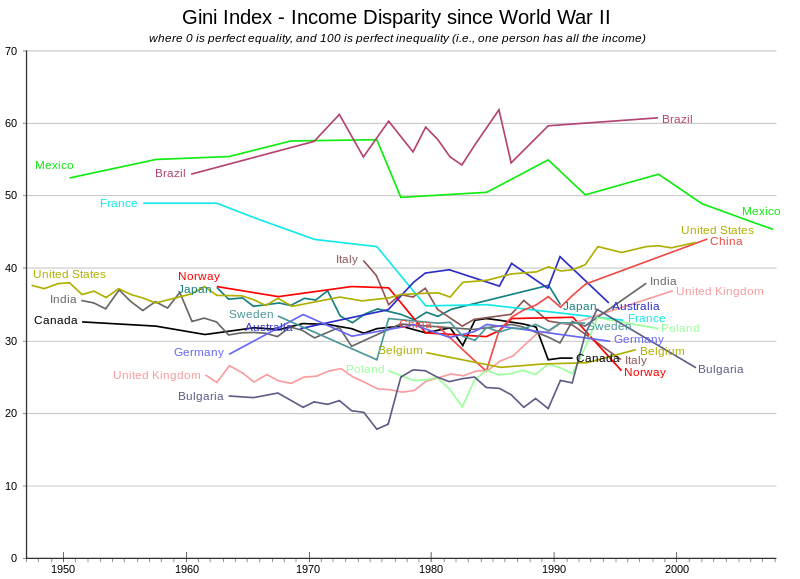
Size of this PNG preview of this SVG file:
800 × 579 pixels. Other resolutions:
320 × 232 pixels |
640 × 463 pixels |
1,024 × 742 pixels |
1,280 × 927 pixels |
2,560 × 1,854 pixels |
1,900 × 1,376 pixels.
Original file (SVG file, nominally 1,900 × 1,376 pixels, file size: 54 KB)
File history
Click on a date/time to view the file as it appeared at that time.
| Date/Time | Thumbnail | Dimensions | User | Comment | |
|---|---|---|---|---|---|
| current | 16:10, 27 September 2009 |
 | 1,900 × 1,376 (54 KB) | Cflm001 | adding Germany and Sweden start labels. Synching Poland label colour with line |
| 13:55, 27 September 2009 |
 | 1,900 × 1,376 (53 KB) | Cflm001 | {{Information |Description={{en|1=Gini indices of selected countries are from publicly available data from the World Bank, Nationmaster, and the US Census Bureau. The Gini index is the Gini coefficient expressed as a percentage |
File usage
The following pages on the English Wikipedia use this file (pages on other projects are not listed):
Global file usage
The following other wikis use this file:
- Usage on ast.wikipedia.org
- Usage on bg.wikipedia.org
- Usage on cs.wikipedia.org
- Usage on el.wikipedia.org
- Usage on es.wikipedia.org
- Usage on et.wikipedia.org
- Usage on fr.wikipedia.org
- Usage on it.wikipedia.org
- Usage on ja.wikipedia.org
- Usage on ms.wikipedia.org
- Usage on no.wikipedia.org
- Usage on ru.wikipedia.org
- Usage on sv.wikipedia.org
- Usage on tt.wikipedia.org
- Usage on vi.wikipedia.org
- Usage on zh.wikipedia.org

